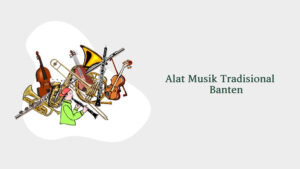
[ad_1]
The Special Region of Yogyakarta or often called Jogja, is one of the four largest islands on the island of Java which is also known as the warm city. Gudeg is one of Yogyakarta’s mascots in the form of regional specialties. The focus of this article is on Yogyakarta’s traditional musical instruments.
But before that, it would be interesting if we discussed a little about the city of Jogja, right?
The city of Yogyakarta has various types of tourist attractions that have extraordinary beauty. The most popular of the many tourist attractions in Yogyakarta is Malioboro, where almost everyone who visits regularly takes time to pose under the signposts.
In addition, apart from tourism, the city of Yogyakarta has certain advantages in terms of its local arts. From a cultural point of view, the most striking thing about the city of Yogyakarta is some of the heritage assets of past civilizations such as temples and other historical buildings such as forts. Vredeburg.
But according to the title of this article, we will get to know more about Yogyakarta traditional musical instruments. And below are 10 types of traditional musical instruments from the Special Region of Yogyakarta.
10 Yogyakarta Traditional Musical Instruments
As with Kyai Wijoyo Mukti’s spear which is also an heirloom gift from the King of the Yogyakarta Palace, musical instruments and local arts that we need to preserve, so that their presence is not moved by modern musical instruments.
1. Dumble

This musical instrument from Jogja is probably quite popular and familiar to the community. The demung is a traditional musical instrument as well as being one of the gamelan instruments which belongs to the balungan family.
Usually there are two demung with different sound versions (slendro and pelog).
The demung musical instrument has a thinner wilahan than the saron, but its size looks wider so that the sound you hear is also lower.
The tool for hitting the demung is made of wood which is like a hammer or a mallet which is bigger and heavier than the saron beater.
Damung is played with percussion. The technique of beating is also not arbitrary, there are those who beat it normally according to the provisions of the sound or are played alternately between the first and second demung, which can later produce a variety of sounds.
2. Krumpyung

The krumpyung musical instrument is part of the traditional musical art of the special region of Yogyakarta which can be found in the area in Kulon Progo. The art of Krumpyung music is played to coincide with the accompaniment of musical instruments originally made of bamboo. The song played by this art is Javanese style.
Javanese style is a form of development from keroncong music which is included in traditional Javanese music idioms. This art has certain characteristics, namely the sound used is Pelog and Slendro which are similar to Javanese gamelan, but in this art there is an inflatable gong that takes part.
3. Gejong Dimples

The Gejong Lesung musical instrument is a side of Yogyakarta art. This art exists because of a form of gratitude to Dewi Sri for the fortune that has been given to the people in that area.
Lesung in ancient times was used by residents to divide rice from the stems, but together with the changing times it has made everything easier and faster.
In the village of Giriharjo, this instrument is still played, but only for custom, such as during art festivals or entertainment competitions such as the 17 August event.
4. Pekingese

Peking is a traditional Yogyakarta musical instrument which is also included in the saron type. In Javanese Gamelan, this musical instrument is called saron panerun. Peking musical instruments have the highest sound.
For the Central Java region, the Peking musical instrument is increasingly known as the saron, panacah, slukat, penitil, cente. This musical instrument has the shape of a blade with 6-7 blades placed on a wooden frame used for the resonator.
5. Drum

In the special area of Yogyakarta there is a drum musical instrument. This instrument serves to control the rhythm. The way to play this musical instrument is to beat it by using your hands without any other tools.
Drum musical instruments have several types of shapes and sizes. Small drums are often called ketipung and medium-sized ones are called ciblon.
6.Gender

Gender is a metal clock instrument as part of Javanese and Balinese gamelan. This instrument has 10 to 14 sounding metal blades. The sound produced varies greatly, depending on the sound scale used.
In Javanese gamelan there are three genders, namely slendro, pelog pathet nem and lima, and pelog pathet barang.
7. Xylophone
The gambang musical instrument consists of 18 bamboo blades. The way to play it is to be hit. Based on several sources found, the gambang musical instrument can be used for several gambang kramong arts.
8. Kempul

This kempul instrument is a hard part of the instrument. Apart from the Kempul musical instrument, there are also bonang barung, gong, successor bonang, kenong, demung. The enemies of these loud traditional musical instruments consist of the barung gender, siter, slenthem, successor gender, fiddle, xylophone, flute, and kendhang.
9. Siter

This Yogyakarta traditional musical instrument has a length of approximately 30 cm. This musical instrument called Siter has 11 and 13 pairs of strings respectively, which when stretched on both sides there is a resonator box.
On one string the sound is set to Pelog and the other strings are tuned to the sound of Slendro. What’s even more interesting about this siter is that when this instrument is played it must be put in one box.
10. Slenthem

The traditional musical instrument of the Special Region of Yogyakarta which after that is the slenthem. Slenthem is played to produce a low hum or called an echo.
This musical instrument is one of the gamelan instruments which consists of wide sheets of thin metal strung by strings stretched over tubes. Besides that, Slenthem is also included in the penetrating gender.
Also Read: Traditional Musical Instruments of West Java
Closing
So, that’s a complete explanation of the traditional musical instruments of the Special Region of Yogyakarta. Hopefully by reading this article we can preserve and protect the arts and culture that exist in our respective areas, so that our children and grandchildren can experience what kind of art and culture we have experienced.
